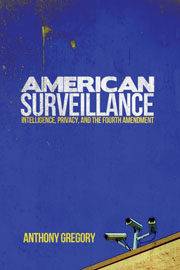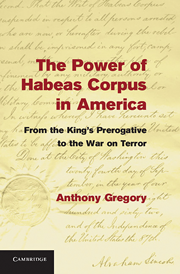More than a thousand times a day, New York City police officers stop and frisk Americans going about their business. In 2011, they conducted such searches on 685,724 New Yorkers. The main rationale is to keep guns off the streets. Yet last year, they only found one firearm per two hundred searches. Mayor Bloomberg, who has overseen a 600 percent rise in these frisks, has cited the low number of confiscated firearms as proof that the program is working.
Predictably, the searches have disproportionately targeted blacks and Hispanics. According to the ACLU, police searches of young black men last year outnumbered the people of this demographic total who are living in the city—168,126 stop-and-frisks of black males aged 14 to 24 in 2011, compared to a local population of only 158,406.
Another troubling aspect involves the women stopped and frisked by male officers. Whereas with airport security, officials can only pat down those of the same gender, New York City’s police officers face no such restriction. Women have accused police of sexualizing their searches. Twenty-two-year-old Crystal Pope complains that one early evening, police officers, claiming to be in pursuit of a rapist, asked for the IDs of her and other women at a bench near her home in Harlem Heights and proceded to search her. The scene she describes raises some serious concerns.
They tapped around the waistline of my jeans... They tapped the back pockets of my jeans, around my buttock. It was kind of disrespectful and degrading. It was uncalled-for. It made no sense. How are you going to stop three females when you are supposedly looking for a male rapist?
The main justification behind these searches is to disarm likely suspects, although it has become a general law-and-order measure, particularly to enforce gun laws. After the horrible Aurora, Colorado, shootings, Bloomberg said the United States should adopt more gun control nationwide but is this what he has in mind? Is this the type of society he wants to have?
Writing for the Wall Street Journal, conservative Heather MacDonald praises the stop-and-frisk policy as a prophylactic, applauding it and other tough-on-crime measures for fostering “New York’s triumph over the lawlessness,” which she calls “the greatest urban policy success of the last quarter-century.” But any of her fellow conservatives who tout their unwavering support for the Second Amendment should object to any program whose main function is to prevent people from carrying guns. Liberals, on the other hand, should recognize the threat that policies such as Bloomberg’s pose to civil liberties.
As for the constitutionality of stop-and-frisk, it all turns on the 1968 Supreme Court case Terry v. Ohio. Police can legally conduct a Terry search when they have a “reasonable suspicion” that the subject has committed a crime or is about to commit a crime. Do the New York police have legitimate cause to suspect between one and two thousand individuals of criminal behavior every day?
MacDonald argues that 680,000 searches based on reasonable suspicion are not extraordinarily high, when considering that “there were nearly 900,000 arrests and summons [sic] last year under the far more exacting standard of probable cause.” That there was one summons or arrest for every ten New Yorkers should not settle our worries, however. A high number of these are drug arrests, and the drug war has notoriously lowered the threshold police have needed to overcome standards for reasonable search and detention. Moreover, many summonses presumably involve minor offenses like traffic violations.
Violent crime has indeed dropped in New York City, as well as in much of the rest of the country. However, it is hard to attribute this to any particular policy. Liberals often credit legal abortion, yet regions with minimal firearm restrictions have also seen crime decrease despite predictions. Conservatives credit the increased prison construction, yet have wrongly predicted that liberalized marijuana laws would augment crime rates. Community norms, civil culture, and private security probably have as much to do with crime patterns as anything else, but are rarely included in the analysis.
Notwithstanding, crime is still higher than it ought to be and we now see another sort of threat on the rise: The criminality of lawless police.
If your chances of being robbed have declined, but your chances of being stopped, harassed, or even brutalized by police have risen, are you better off? If the number of people stopped, frisked, arrested, imprisoned, beaten, and shot by police has risen, can it really be said that communities are safer? Looking around our society, we see frightening trends: The militarization of police, officers disciplining children violently, family pets summarily shot in mistaken midnight raids, a hundred SWAT-style home invasions a day, and the largest per capita prison population on earth. Now, citizens of America’s most famous city must contend with fears of being stopped, forced to produce documentation, and potentially groped or otherwise harassed without warrant. The American colonists of the late eighteenth century fought a revolution over less.
Arguing over the effect that firearm restrictions have on crime is certainly important, but there is an even more critical debate involved in Bloomberg’s stop-and-frisk policies: A question of basic American values. What kind of society do we want to live in? A police state is not my answer and I would like to believe it isn’t the preference of the majority of the American public. However, in that case, we must tread lightly- if we are not there yet, we are certainly heading that way.








